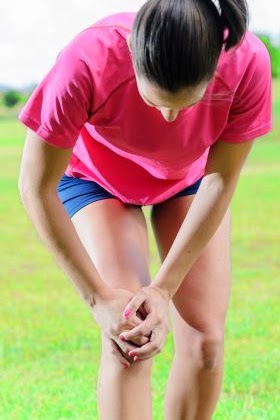 |
| Image Credit: TheUsher |
You may have had an episode of knee pain from running. This is a common problem especially for sportspeople who put excessive stress on their knees. This culminates in a medical condition where there is pain around the front area of the knee. This is medically referred to as anterior knee pain syndrome, chondromalacia patella, patellofemoral mal-alignment or more commonly, the patellofemoral pain.
Causes
The knee is a very complex joint. It is made up of various different tissues. This means that there are many factors that may precipitate in anterior knee pain syndrome. This could be problems arising from the bones, muscles or other connective tissues in the knee.
The most common causes of runner’s knee include;
- Misalignment of the kneecap
- Dislocation of the knee which may be partial or complete
- Trauma or injury to the knee; this could be direct or indirect
- Myopathy; this is a problem with the muscles around the knee or those that move the knee. The problem could be weakness, imbalance or tightness among other things.
- Individuals with flat feet frequently experience the problem
- Overuse pain is common to people who walk stand or run for extended durations
- Irritation of the knee joint tissue is also fairly common in active sportsmen and women
- Wearing off of the cartilage or synovial membrane that lines the knee may result in pain in the joint
Presentation of symptoms
People with this problem complain of a dull ache or pain beneath or around the kneecap. The pain is often localized around the lower end of the thigh.
Mostly the pain will be made worse or be precipitated by walking especially up and down the stairs, activities that bend and stress the knee such as kneeling, sitting for long periods and squatting. All these activities make the pain worse if they are done for extended durations.
Diagnosis
A medical history will be taken whereby you will be asked about the symptoms. Be as honest as possible. You will then undergo a physical examination aimed at assessing various attributes of your knee such as strength, mobility and congruency or alignment.
Depending on your condition the doctor may ask that you undertake some diagnostic imaging procedures to assess the structure and extent of damage to your knee. Such imaging techniques could be x-ray, MRI or CT scans.
Treatment
After a medical review has been done on the affected knee, the doctor will then decide on the most fitting course of treatment for your condition.
Most people only require adequate rest and appropriate patellofemoral pain syndrome exercises to alleviate the condition.
Symptomatic relief to the pain may be achieved by painkillers especially NSAID drugs such as aspirin.
You may be issued with special braces or tapes for supporting your knee during activities such as sports. Special shoe insets known as orthotics may be also prescribed.
Surgical maneuvers may be necessary in some cases. The procedures include: arthroscopy and realignment procedures.
Prevention
Physical fitness is crucial in preventing anterior knee pain. In sports a proper warm up is always advised. The training or exercise should be progressive beginning from simple to more complex activities.
Proper running gear and form are also excellent in preventing anterior knee pain.


